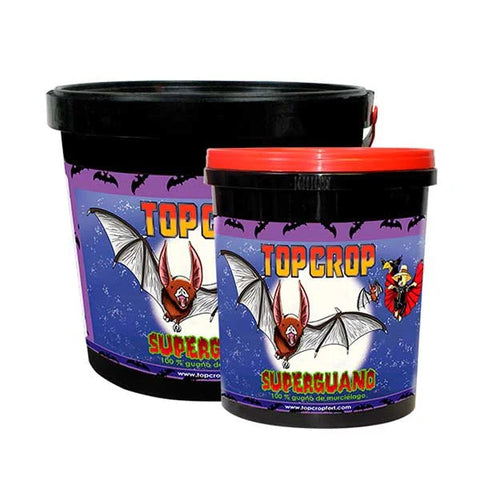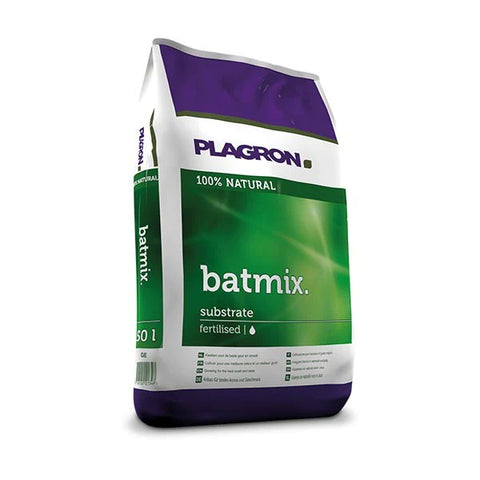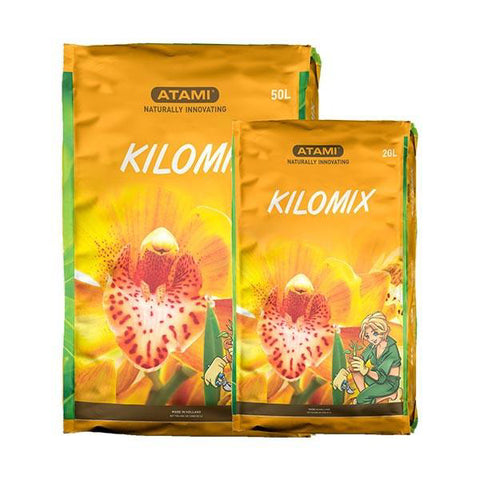In the world of sustainable agriculture and organic gardening, bat guano has emerged as an essential component, recognized for its remarkable ability to enrich soils and enhance plant growth. This natural fertilizer, made up of bat excrement, is a treasure hidden in caves and remote places, and its use dates back centuries. The uniqueness of bat guano lies in its rich nutrient composition, which includes nitrogen, phosphorus, potassium and a number of essential microelements, all crucial for healthy plant development.
In cannabis cultivation, the flowering stage is crucial in determining the quality and quantity of the harvest. This is where bat guano plays a starring role. Its high phosphorus and potassium content is particularly beneficial during flowering, helping cannabis plants develop dense, aromatic, cannabinoid-rich flowers. Using bat guano for flowering not only promotes explosive growth and high-quality flowers, but also maintains ecological balance, offering growers a completely natural and sustainable option.
During the flowering stage of cannabis, you can use bat guano as an organic fertilizer to boost growth and flower production. Mix bat guano with the substrate or dissolve it in water to apply as irrigation. Follow the manufacturer's recommendations for proper dosage and avoid over-applying to prevent potential nutrient problems.
Best Bat Guano products: for the flowering stage
When looking for the best bat guano products to use in the flowering stage, at Grow Industry we found several outstanding options that could be very useful for your cannabis crops:
Top Crop SuperGuano
Top Crop SuperGuano is an ecological granular fertilizer designed to improve the formation and development of flowers, enriching your plants with phosphorus, potassium, and other essential nutrients. It is ideal for use in the flowering stage, promoting greater quality, flavor, and aroma of the flowers. It can be applied both indoors and outdoors, in orchards, poor soils, or light substrates, with specific doses for each case and the possibility of complementing it with other products for optimal performance.
Plagron Bat Mix
Plagron Bat Mix is a 100% organic substrate designed for autoflowering plants and those that require high levels of phosphorus and potassium. It includes high quality peat, worm castings and bat guano, enriching the plants until the sixth week of cultivation. This substrate promotes vigorous growth, improving water retention. Specifically, bat guano boosts flowering by providing essential nutrients, resulting in vigorous pre-blooming and optimal plant development.
Atami Kilo Mix
Atami Kilo Mix is a substrate rich in nutrients, including worm humus and bat guano, ideal for enhancing root development and the absorption of water and nutrients. It is organic, versatile for any crop, and promotes healthy, vigorous growth. The bat guano in its composition helps especially during flowering, providing essential nutrients for optimal plant development, better flavors and aromas.
Why use bat guano for flowering?
Bat guano is a highly valued organic fertilizer in marijuana cultivation due to its numerous benefits during the flowering stage. Here are some key reasons why growers prefer to use bat guano during this phase of the cannabis plant life cycle:
- High Nutrient Content : Bat guano is rich in nutrients essential for healthy plant growth, such as phosphorus, potassium, nitrogen, calcium and magnesium. During the flowering stage, marijuana plants have an increased demand for phosphorus and potassium, essential nutrients for bud development and resin production. Bat guano naturally provides these nutrients, which can significantly improve bud quality and yield.
- Flowering stimulation : The phosphorus present in bat guano plays a crucial role in promoting flowering and the formation of dense, resinous buds. Phosphorus is a key component of the metabolic processes that take place during the flowering stage, including protein synthesis and energy transfer, helping plants reach their full flowering potential.
- Flavor and Aroma Enhancement : Bat guano can enhance the flavor, aroma, and potency of buds due to its unique composition of nutrients and organic compounds. The nutrients present in bat guano can influence the biosynthesis of terpenes and other aromatic compounds in marijuana plants, which can result in buds with more complex and distinctive flavor and aroma profiles.
- Organic Fertilization : Bat guano is a natural organic fertilizer, meaning it provides nutrients in a sustainable and environmentally friendly way. By using bat guano instead of synthetic chemical fertilizers during the flowering stage, growers can promote greener, chemical-free cultivation, which can be beneficial for both plant health and the quality of the final product. .
In summary, using bat guano during the flowering stage of marijuana cultivation can provide a number of benefits, including delivering essential nutrients, stimulating flowering, improving flavor and aroma, and promoting organic and sustainable farming practices. These reasons make bat guano a popular choice among growers looking to maximize the yield and quality of their buds during the flowering phase.
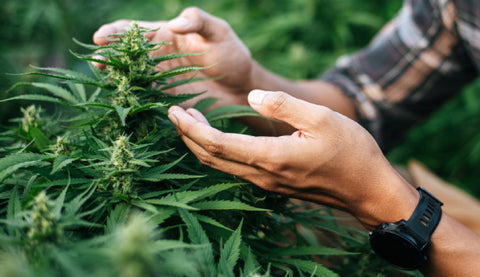
How to Use Bat Guano for Flowering
Proper use of bat guano during the flowering stage of cannabis cultivation is crucial for the best results. Below are step-by-step instructions and tips for applying this organic fertilizer effectively:
Step 1: Preparation of Bat Guano
Before applying, make sure the bat guano is dry and finely ground. If it is in large granules or wet, you can crush it to facilitate its use and absorption by plants.
Step 2: Determining the Correct Dosage
The dosage of bat guano depends on several factors, including the size of your plants and the condition of the soil. A general rule of thumb is to use about 1 to 2 tablespoons (15-30 ml) of guano per plant. However, it is vital to start with a lower dose and adjust based on the plant's response.
Step 3: Application of Guano
- Apply the guano directly to the soil, spreading it around the base of each plant. Avoid direct contact of the guano with the stems or leaves, as this could burn the plant.
- Work the guano gently into the top few inches of soil. This helps nutrients get incorporated into the soil and be more accessible to plant roots.
Step 4: Watering
- After applying the guano, water your plants as usual. The water will help leach the nutrients from the guano into the soil, making them more accessible to plant roots.
- Application Frequency : Bat guano should be applied at the beginning of the flowering stage and can be reapplied every 2-4 weeks, depending on the needs of your plants. Carefully observe your plants' response to adjust the frequency and quantity.
Additional Tips
- Always wear gloves and a mask when handling bat guano, as it may contain microorganisms that are unhealthy to inhale or come into direct contact with the skin.
- Consider making bat guano tea. This is done by soaking the guano in water for 24-48 hours and then using the water to water the plants. It is an effective way to apply nutrients more evenly.
- Monitor soil pH regularly. Bat guano can slightly alter the acidity of the soil, so it is important to maintain a proper balance for optimal cannabis growth.
Advantages of Bat Guano for Cannabis Flowering
Bat guano is a highly efficient organic fertilizer and offers numerous benefits to the health and performance of cannabis plants during their flowering stage. Specific benefits are discussed here and compared to other fertilization methods.
Improves the Quality and Quantity of Flowering
The high phosphorus content in bat guano is essential for cannabis flowering. Promotes the development of larger, denser flowers, improving both the quality and quantity of the harvest.
Furthermore, the micronutrients present in guano, such as magnesium and calcium, are vital for the formation of healthy and robust flowers.
Slow and Sustained Release of Nutrients
Unlike chemical fertilizers, which can release nutrients in a rapid but often unbalanced manner, bat guano provides a slow, steady release. This ensures that the plants receive continuous feeding throughout the flowering stage, without the risk of over-fertilization.
This balanced supply of nutrients supports stable and healthy growth, crucial during the critical flowering phase.
Improves Soil Health
Bat guano not only nourishes plants, but also enriches the soil. Improves the structure of the soil, increasing its porosity and capacity to retain water and nutrients.
It encourages beneficial microbial activity in the soil, which in turn improves the decomposition of organic matter and nutrient availability for plants.
Safety and Environmental Sustainability
As an all-natural product, bat guano is a safer and more eco-friendly option compared to synthetic fertilizers, which can contain harmful chemicals and contribute to soil and water pollution.
Its use aligns cultivation practices with sustainable agriculture, respecting the environment and reducing the carbon footprint.
Comparison with Other Fertilization Methods
Synthetic fertilizers can provide quick results, but often at the expense of long-term soil and plant health. They can cause salt accumulation, nutrient imbalance and chemical dependency of plants.
Organic fertilizers, such as bat guano, not only nourish plants but also maintain and improve soil health, ensuring a long-term sustainable and productive growing ecosystem.
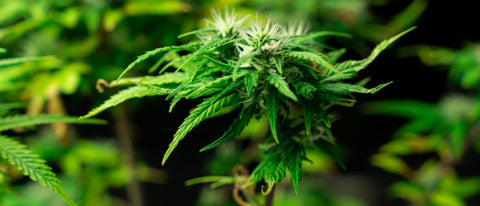
Considerations and Best Practices
Proper selection and management of bat guano is essential to maximize its benefits in cannabis cultivation, especially during the flowering stage. Below are key guidelines for selecting high-quality guano and recommendations for safe use and efficient storage.
Selection of High Quality Bat Guano
- Origin and Type : Different types of bats produce guano with variations in nutrient composition. Guano from fruit bats is usually richer in potassium, while that from insectivores is high in nitrogen. For flowering, look for a guano with a higher phosphorus content.
- Processing and Purity : Choose guano that has been minimally processed to preserve its natural properties. Avoid products that contain additives or are excessively processed.
- Freshness : Although guano can be effective even after years, a fresher product generally ensures greater potency and effectiveness.
- Certifications : Look for products with organic certifications or quality tests that guarantee their purity and composition.
Security Recommendations
- Protective Equipment : Always wear gloves and a mask when handling bat guano to avoid inhalation of dust and direct contact with the skin.
- Hygiene : Wash your hands and any other exposed areas after handling. Be sure to keep guano away from food preparation areas and away from children or pets.
- Ventilation : Work in a well-ventilated area when you are applying bat guano, especially if you are working in enclosed spaces such as greenhouses or grow rooms.
Effective Storage
- Suitable Container : Store bat guano in an airtight container to keep out moisture and pests, and to reduce the spread of dust.
- Cool, Dry Environment : Store guano in a cool, dry place. Exposure to moisture can cause guano degradation and mold growth.
- Labeling and Organization : Clearly label the container with the date and type of guano. Keep track of how much and when you use it for efficient management of your supply.


